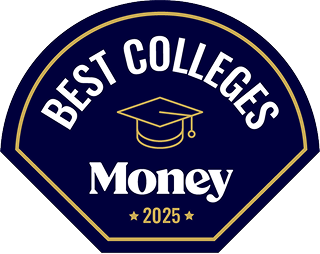Based in a small, vibrant college town, Indiana University Bloomington is the state's flagship public campus. Its 36,000 undergraduate students come from across the U.S. (and 100 different countries) for an education at one of the top-ranked state schools in the Midwest. IU Bloomington also has a stunning campus, with several buildings on the National Register of Historic Places.
Though the size of the institution can seem intimidating, it's also IU's greatest asset — where else can you study Hungarian, or take a class led by one of the largest harp departments in the world? The university offers a staggering 200-plus majors, minors and certificates spread across 12 colleges and schools. It also offers classes in 80 languages, which it claims is more than any other public university. Students can also participate in over 380 study abroad programs.
IU has a multimillion-dollar athletic endowment for its 24 varsity sports teams, and Greek life comes standard for Hoosiers. Still, it offers alternatives to party-filled weekends, including a bowling alley in the student union and the Little 500, a collegiate bike race that gets its name from the infamous auto race in Indianapolis, Bloomington’s neighbor to the North.
The university stands out in Money's rankings in part for its relative affordability, with an estimated net price of a degree (not including federal or state aid) coming in at $102,000; that’s significantly less than the median net price of all colleges on our list.





